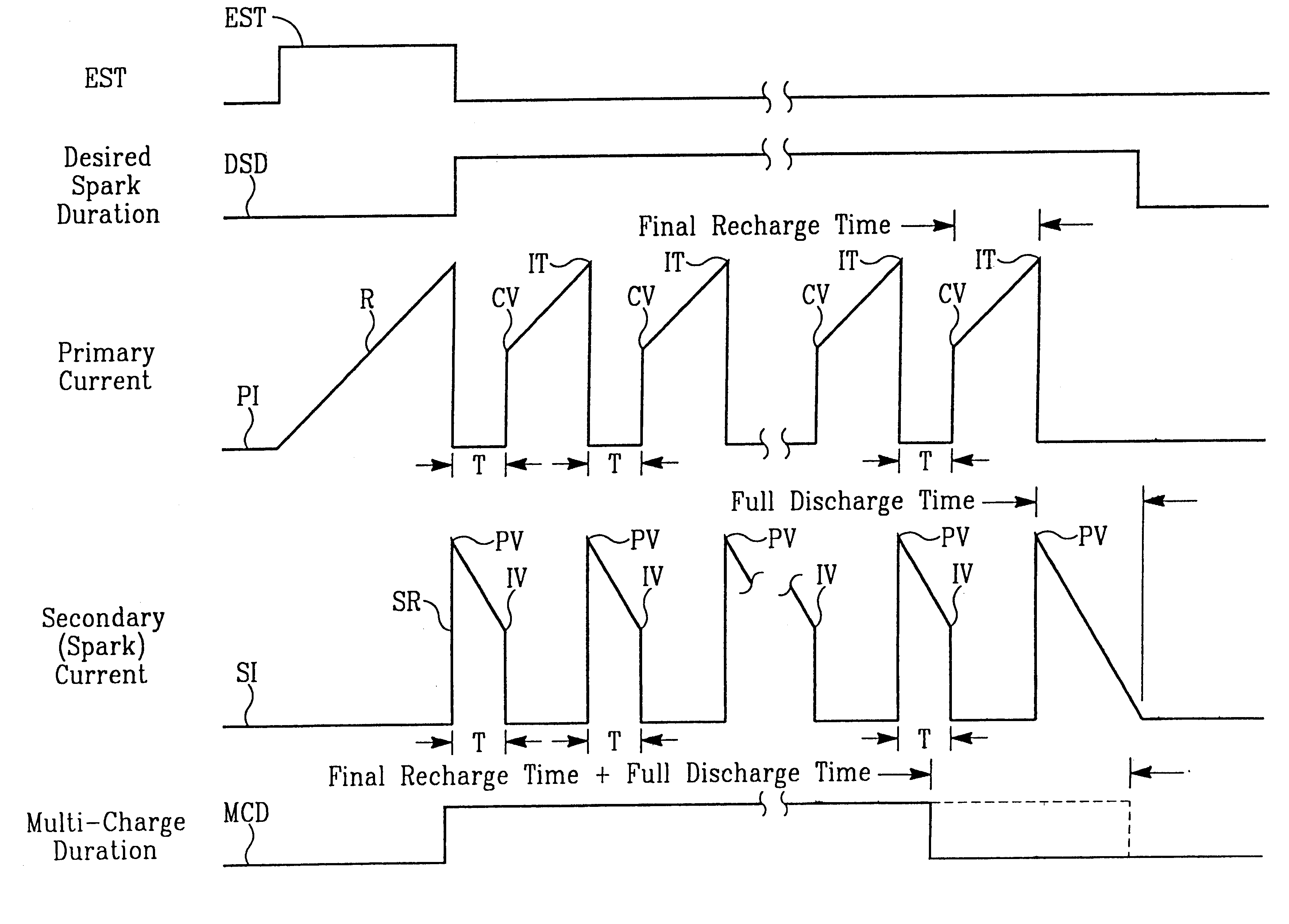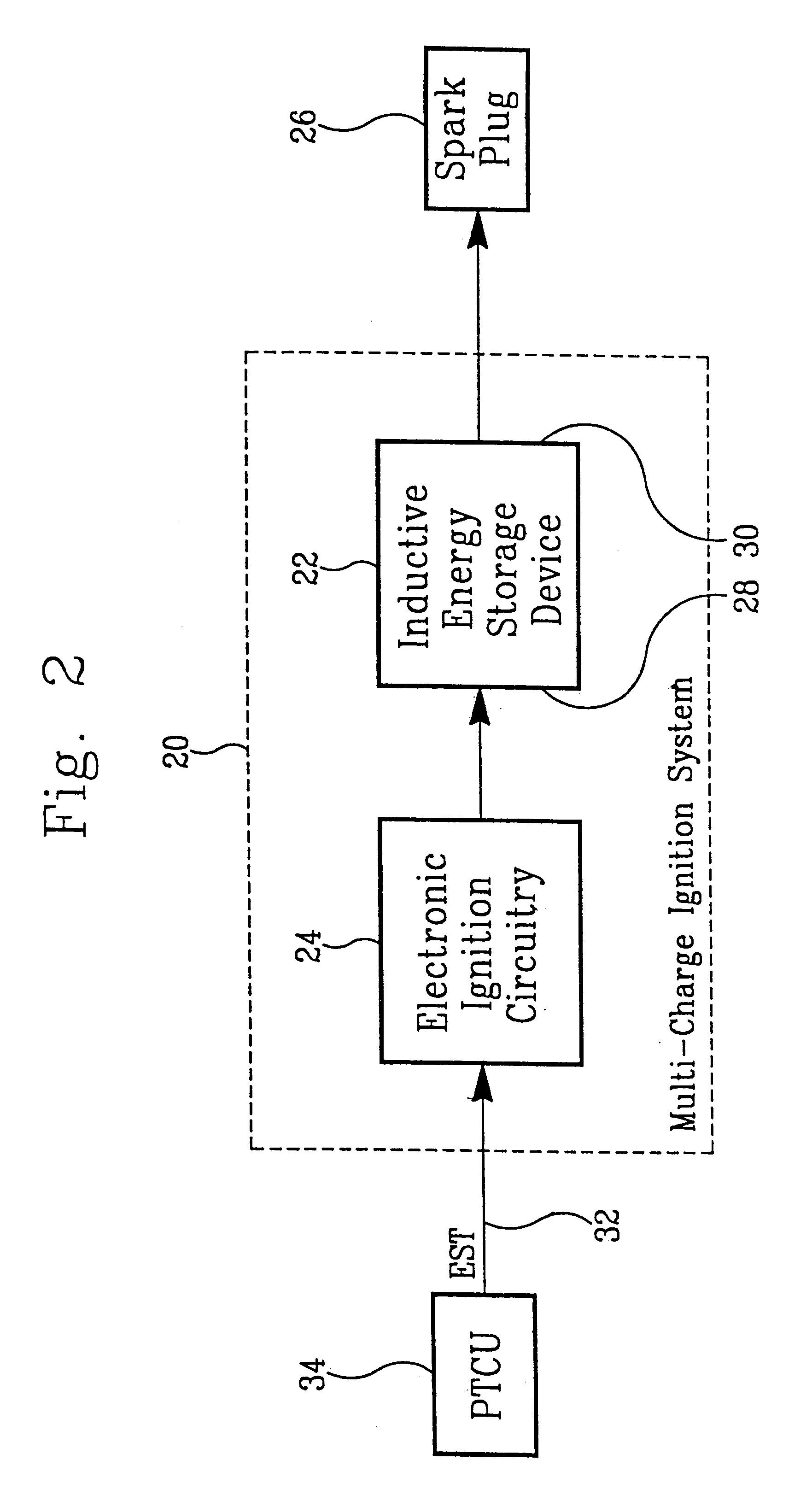System and method for providing multicharge ignition
a multi-charge ignition and ignition system technology, applied in the direction of mechanical equipment, machines/engines, electric control, etc., can solve the problems of high cost, complex circuitry, and failure to achieve successful energy pulses to contribute to the desired combustion process, etc., to achieve the effect of even if they exist, and reducing the cost of high-temperature filter capacitors
- Summary
- Abstract
- Description
- Claims
- Application Information
AI Technical Summary
Benefits of technology
Problems solved by technology
Method used
Image
Examples
Embodiment Construction
The preferred embodiments of the present invention will be described in the context of an internal combustion engine having a certain number of cylinders. It is understood, however, that the invention can be applied to engines having any number of cylinders, as well as engines having non-cylindrical combustion chambers (e.g., rotary engines).
FIG. 1 is a timing diagram of a multicharge method according to a preferred implementation of the present invention. EST in FIG. 1 denotes a timing signal which is generated by the power train control unit (PTCU) of many production vehicles. The EST signal indicates when the next firing of a spark plug is to commence. Typically, one EST pulse is delivered for each firing. Thus, in an eight-cylinder, four-stroke engine, for example, each pair of revolutions of the engine will result in eight EST pulses of the type illustrated in FIG. 1. The EST pulses are temporally separated and used to trigger a sparking event in one or more of the combustion c...
PUM
 Login to View More
Login to View More Abstract
Description
Claims
Application Information
 Login to View More
Login to View More - R&D
- Intellectual Property
- Life Sciences
- Materials
- Tech Scout
- Unparalleled Data Quality
- Higher Quality Content
- 60% Fewer Hallucinations
Browse by: Latest US Patents, China's latest patents, Technical Efficacy Thesaurus, Application Domain, Technology Topic, Popular Technical Reports.
© 2025 PatSnap. All rights reserved.Legal|Privacy policy|Modern Slavery Act Transparency Statement|Sitemap|About US| Contact US: help@patsnap.com



